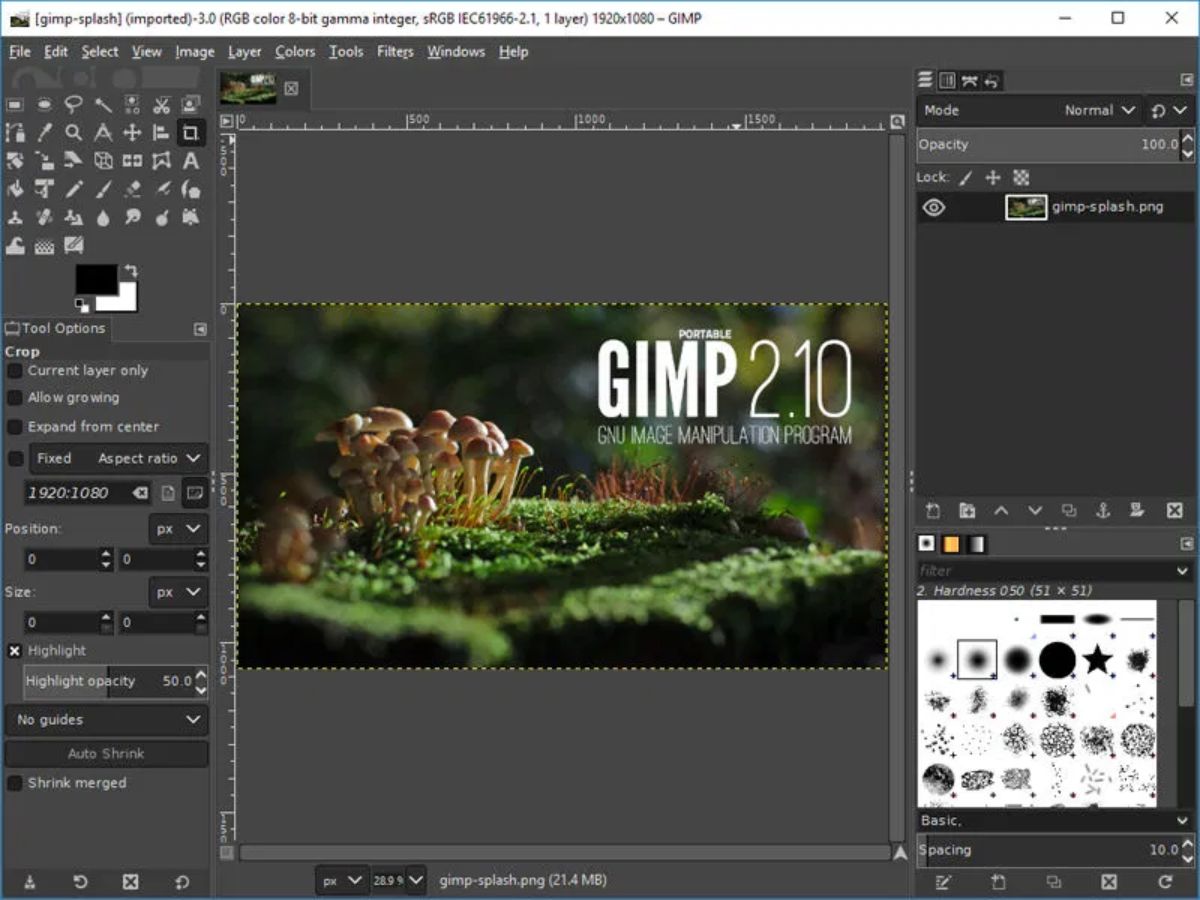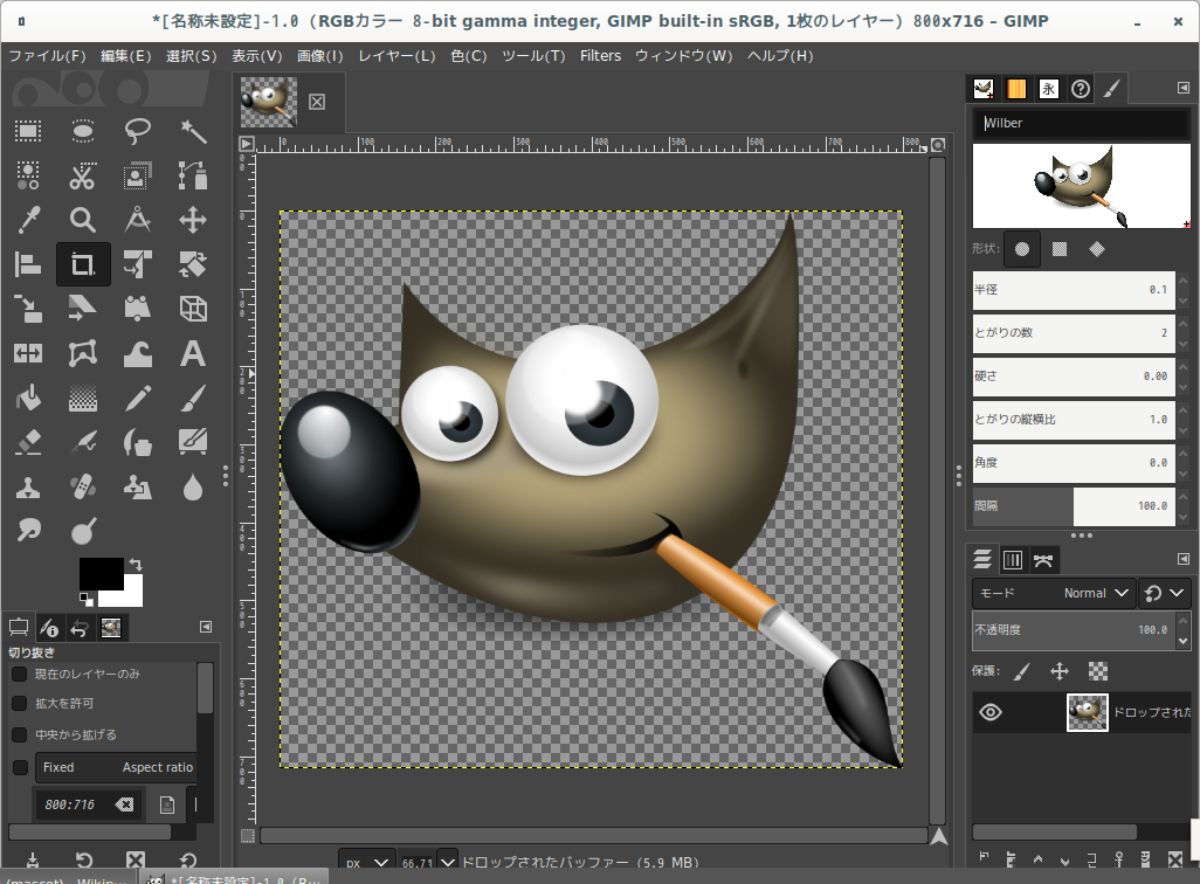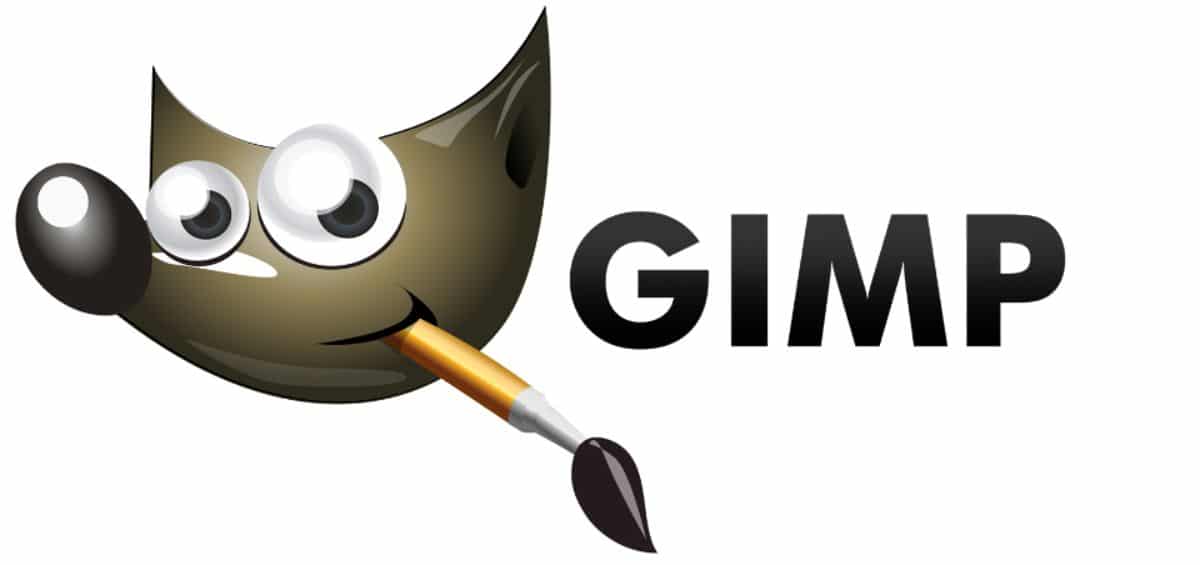
Among the image editing programs, there is no doubt that the best known is Photoshop. However, there is another that rivals and even many prefer over the brand. In addition, it is free and does practically the same as the most used. You know which one is? It's about Gimp. But what is Gimp?
If you have heard about this image editing program but are not sure what it is, if it can be better or the same as Photoshop and what you can do with it, then we will talk about everything you need to know about Gimp.
What is Gimp

The first thing you should know about Gimp is the meaning of its acronym. Specifically, it is a GNU image manipulation program, or what is the same, an image editing program. You can work with both bitmaps and drawings, photos, illustrations, etc.
As we have mentioned before, the program is free and free, being able to install both in Windows and in GNU / Linux and in Mac OS X.
Regarding its relationship with Photoshop, they are two different programs, although it is an alternative that even surpasses the most used program in image editing. Now, its development was not based on Photoshop, and its interface is not the same either.
Those who have tried it say that it is more complex and difficult to work with, especially if you are used to Photoshop. But once you know how to handle it, better results can be achieved with it.
The origin of Gimp

Gimp was born through Spencer Kimball and Peter Mattis in 1995. For them, it was a semester exercise that they had to present at the UC Berkeley student computer club. However, it was so innovative that it caught the attention of many.
A curiosity that not many know is that the original name of Gimp did not contain the name by which it is now known. In other words, when it was born it was a «General Image Manipulation Program». However, in 1997 it changed to "GNU Image Manipulation Program".
Another curiosity is that the logo that the program has, which looks like a wolf or a dog, has a name. This is Wilber, the official Gimp mascot that was created in 1997 by Tuomas Kuosmanen (tigert). In fact, you can see more images on the Wilber Construction Kit site, which is in the Gimp source code. And yes, that mascot was designed using the program, it was not going to be less.
Advantages and disadvantages of using Gimp
The image editing tool is one of those that rivals other programs. Therefore, there is no doubt that it has several advantages that it stands out for. However, it also has disadvantages.
The advantages are:
- Is free.
- You do not need to install it on your computer, but you could have the program in a local folder, an external disk or from the Internet cloud.
- Higher quality features are available for layers and paths.
- Eliminate photo backgrounds in just a few steps.
- It is much faster than Photoshop.
Despite all those good things, it also has some disadvantages which are:
- Not being able to work with RBG of more than 8 bits, grayscale or indexed images. Although through referrals the problem can be partially solved.
- It has more limitations than with Photoshop, and that when you work very often with images it shows. Also, if you have to edit images in which there are many layers, you can run into quite a few problems.
- It is more complicated to use, especially at the beginning. Although you can make use of the tutorials found on YouTube.
What is it for
Now that you know a little more about Gimp, you will most likely have an idea of what it is for.
In general, Gimp is used to work with images and as it is a free and open tool that can be used in multiple technologies, many choose it to install it.
If we go a little deeper into the program, you will notice that it reads and writes various image formats such as jpg, gif, png, tiff ... and it even reads Photoshop. Now its own storage format is Xcf. You can also import Pdf and Svg files (vector images).
It has several tools that you can find in Photoshop such as layers, channels, various types of brushes, etc. To this you must add selection tools, smart scissors, tools to paint, to modify scales, tilt, deform or clone ... It has other tools and / or filters to manipulate colors as well as the image and a menu with effects and image treatments.
In other words, you have a tool with which you can create from scratch or modify any image you need as you would with another image editing program.
When saving, by default it will do so in its own format, but exporting the image will let you choose the format you need.
Program derivations

In addition to Gimp, the program has managed to get several derivations that are more or less known. Specifically, you have
- GimpShop. It is an interface that allows you to clone and make Gimp more like Photoshop. In this way, those who are used to this program, feel more comfortable, especially to find everything they use on a daily basis.
- Gimphoto. Another modification that also allows it to be similar to Photoshop. This has a more current version, 2.4.
- Seashore. This derivation is for Mac and in it you will find the basic elements of Gimp, but not the advanced ones.
- CinePaint. It was previously known as Film Gimp and allows 16 bits of depth per color channel to be added to the program. It has a frame manager and other better ones related to cinematographic art.
Now that you know more about Gimp, it is time to think about whether it is the image editing program you were looking for. Its many advantages can empower you as such, but you must also consider the disadvantages. What do you think? Do you choose Gimp or do you prefer another program to edit images?